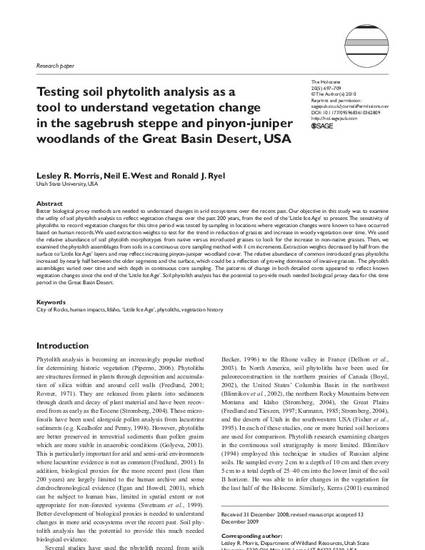
Article
Testing soil phytolith analysis as a tool to understand vegetation change in the sagebrush steppe and pinyon-juniper woodlands of the Great Basin Desert, USA
Holocene
(2010)
Abstract
Better biological proxy methods are needed to understand changes in arid ecosystems over the recent past. Our objective in this study was to examine the utility of soil phytolith analysis to reflect vegetation changes over the past 200 years, from the end of the 'Little Ice Age' to present. The sensitivity of phytoliths to record vegetation changes for this time period was tested by sampling in locations where vegetation changes were known to have occurred based on human records. We used extraction weights to test for the trend in reduction of grasses and increase in woody vegetation over time. We used the relative abundance of soil phytolith morphotypes from native versus introduced grasses to look for the increase in non-native grasses...
Disciplines
Publication Date
2010
DOI
DOI: 10.1177/0959683610362809
Citation Information
Neil E. West. "Testing soil phytolith analysis as a tool to understand vegetation change in the sagebrush steppe and pinyon-juniper woodlands of the Great Basin Desert, USA" Holocene Vol. 20 Iss. 5 (2010) p. 697 - 709 Available at: http://works.bepress.com/neil_west/16/
